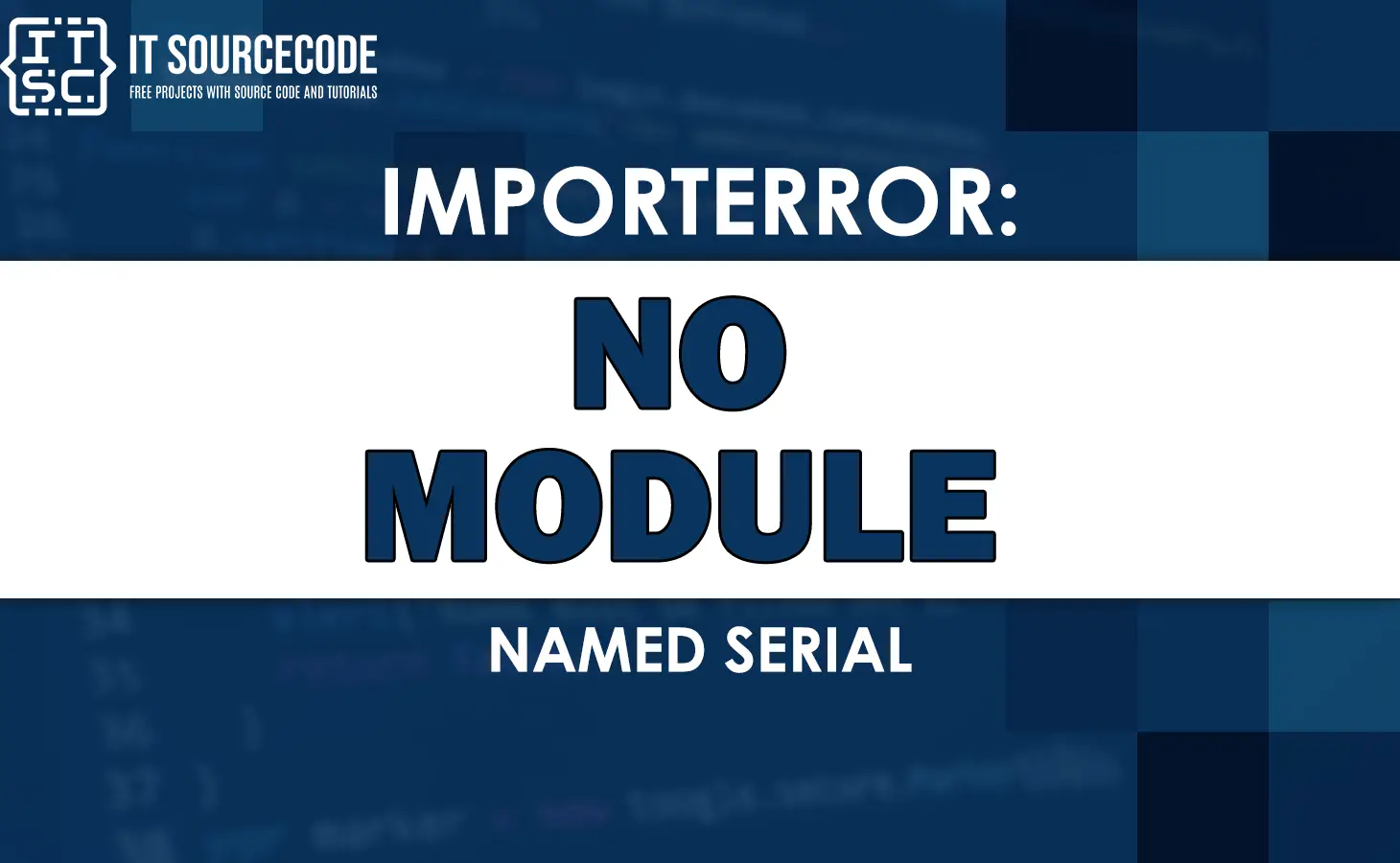One common error you might face is the “ImportError: No module named serial.”
So in this article, we will explore this error, its common causes, and effective troubleshooting steps to help you overcome it.
What is Importerror: no module named serial?
The error Importerror: no module named serial message usually occurs when the pyserial package is not installed or incompatible with other packages.
Other than knowing what error is this, we should also discover what are the factors that lead to this error.
Collectively, the possible reason includes the following:
- The most common cause of the “ImportError: No module named serial” error is the absence of the PySerial library.
- Another possible cause is an incorrect installation of PySerial or a version mismatch between the library and the Python interpreter.
- If you’re working within a virtual environment, the error can occur if the PySerial library is not installed or accessible within that environment.
Solutions – Importerror: no module named serial?
Since we already know what are the factors it’s time to fix it.
To fix the “ImportError: No module named serial” error, follow these troubleshooting guide provided:
Install PySerial Library
The straightforward way to fix the error is to install Pyserial library. To do this open your command-line interface or terminal.
Then execute the following command:
pip install pyserialThis command should install the Pyserial library.
Verify Installation and Version
Another way to fix this Importerror: no module named serial is to verify the installation and versions.
Here are the steps to follow:
- In your Python script or interactive shell, import the serial module using import serial.
- If no error occurs, the library is successfully installed. Otherwise, continue with the next step.
- Execute the command pip show pyserial to check the PySerial installation details, including the version.
- Ensure that the installed version matches your Python interpreter’s version.
Checking Virtual Environment Setup
- If you’re working within a virtual environment, activate it using the appropriate command (e.g., source env/bin/activate for Unix-based systems).
- Repeat the steps mentioned earlier to install and verify the PySerial library within the activated virtual environment.
Importing the Correct Serial Module
If you have multiple installations or versions of Python on your system, it’s essential to ensure that you’re importing the correct serial module associated with the Python environment you’re using.
To do this:
- Check the Python executable or interpreter you’re using by executing the command which python (Unix-based systems) or where python (Windows).
- In your script, add the following lines at the beginning to explicitly specify the Python interpreter:
#!/usr/bin/env python
Alternative Solutions
Using Anaconda Distribution
If you’re using the Anaconda distribution, you can leverage its package management system to install PySerial.
Open the Anaconda Navigator or Anaconda Prompt and execute the command the following command:
conda install pyserialCreating a New Virtual Environment
If you suspect that the virtual environment you’re using is causing the error, try creating a new virtual environment from scratch.
Install PySerial within the new virtual environment and ensure that it is activated while executing your Python script.
Using a Different Serial Communication Library
If you’re unable to resolve the error with PySerial, consider exploring alternative serial communication libraries available for Python. Some popular alternatives include:
serialport
pyserial-asyncio
pyserial-windows #for Windows-based systemsAnyway, here are other fixed errors, you can check:
- Importerror: cannot import name ‘cached_property’ from ‘werkzeug’
- Importerror: cannot import name ‘paramspec’ from ‘typing_extensions’
Conclusion
The “ImportError: No module named serial” error can be frustrating when working on Python projects involving serial communication.
However, by understanding the causes and following the troubleshooting steps outlined in this article, you can effectively overcome this error.
Remember to ensure the PySerial library is installed correctly, verify installation and version compatibility, and pay attention to virtual environment configurations.
Additionally, consider alternative solutions and keep your Python environment up to date to minimize the chances of encountering this error.

